“We have calcium in our bones, iron in our veins, carbon in our souls, and nitrogen in our brains. 93 percent stardust, with souls made of flames, we are all just stars that have people names.” – Nikita Gill

Mom in the Grand Tetons, 1981
On the next-to-last day in January, the local medical supply company delivered a hospital bed to my parents’ house and helped set it up in my mother’s home office, the room she had chosen to die in. It was a Thursday, and I remember thinking, “Wait—this is really happening? She isn’t changing her mind? She’s actually going through with it?”
Until that moment, I had comforted myself with a constant litany of denial: She won’t be able to cut out sugar ahead of time, so she won’t even begin the process. Or, she’ll cut out sugar, but she’ll change her mind before she stops eating and drinking completely. Or, she’ll start and then quit, and then we can forget about the whole thing. I seized on anything and everything to distract myself from what my mother had said for three years she intended to do: die a natural death by refusing food and water before her dementia could reach the later stages. To do this meant she had to give up good days in order to avoid bad years, a fact I had accepted intellectually but failed, apparently, to truly internalize.
I took my time getting to my parents’ house that morning. I dropped the kids off at school and walked the dogs around the neighborhood, cried on Kris’s shoulder, and talked with Ed, my father-in-law, the hospice professional who had volunteered to help us through the next month. I lingered in the shower under the blissfully hot spray and tried to forget my growing horror at what my mother was facing—anywhere from seven to twenty days of not eating or drinking anything while she waited for her body to die.
At last, clean and fed and duly comforted, I could delay no longer. Reluctantly, I drove the two and a half miles to my parents’ house to see what changes had been wrought in my absence.

One of Mom’s bulletin boards
The hospital bed was already made up in the room that only a few days earlier had held piles of books, multiple cabinets, a table strewn with papers, a desk, and a computer. Now, in addition to the bed, it held only a single bookshelf, overflowing with photo frames of family and friends, while Mom’s macramé art and photos from other rooms now occupied the newly empty wall space. The bed had been positioned so that Mom would be able to gaze out at the evergreens edging the patio and at the peekaboo view of the nearby lake. More photo frames and knickknacks—interesting rocks, lake glass, a clay bird Alex had made for her, a ceramic figure of a soccer player I’d made in elementary school—lined the window ledge, while on the wall behind her bed, she’d left the pair of bulletin boards that held news clippings, political stickers, notes, holiday newsletters, cartoons, and more photos, from horseback riding in the Rockies and belaying backward off a bluff in Grand Teton National Park to her high school yearbook photo and a shot of the board of the women’s scholarship fund she’d helped found in Michigan.
I was standing in the doorway when my mom walked by and headed into the bedroom she’d shared with my dad since they moved to Washington State in the summer of 2015. Gladly, I turned away from the hospital bed and joined her beside her bedroom dresser, where she immediately tried to give me all of her socks.
“Charlotte doesn’t want these,” she said, referring to her younger sister who would be sleeping in the den for the duration.
“I’ll go through them at some point,” I promised. I was still avoiding the conversation she’d been trying to have with me for months, and we both knew it.

Mom & me in the beginning, 1973
She shook her head a little and squeezed my arm as she turned away, gaze already fixed on the other dresser. She was always putzing around these days, always forgetting what she had entered a room to do and getting distracted by a new, shiny thought she could rarely hold onto for long.
“Wait,” I said.
“Hmm?” she asked, only half-listening as she pulled open a mostly empty drawer.
I hesitated. I never thought I’d be the weak link in all of this, but here we were. “You don’t really have to do this, do you?” I asked. “Not now, I mean. Not yet.”
“Oh, honey,” she said, looking back at me. “I think that decision has already been made.”
“But you’re my mom,” I said, tears welling up at the realization that yes, this really was happening. I knew the decision had been made; after all, I’d been there when my parents made it. But somehow I still hadn’t accepted what that decision truly meant.
Mom moved closer and hugged me warmly, rubbing my back the way she used to when I was little. “That won’t change, sweetie. I will always be your mom. Always.”
I held on tight, tears brimming over, until someone or something else caught her attention and the moment slipped away. There would be no going back, I realized that morning, no last-minute change of heart. My mother was resolute—and ready to leave, as it turned out, even if the rest of us might not be ready to be left.

Sunday brunch fun with Grandma, Nov 2019
Two months earlier, just before Thanksgiving, my mother and I had stood in her office after our usual Sunday brunch date, talking together while the girls played with Kris and my dad in the living room. Like it often did, the discussion shifted to the topic of her impending death. I mentioned my college girlfriend’s theory about the conservation of energy, and told my mother (as I had many times before) that I believe that when people die, they don’t simply cease to be. Their energy transforms into something else, something alive or maybe simply in motion, like a tree or a river or even a star. After all, we’re all made of the stuff of stars, as Carl Sagan famously pronounced.
“When I die,” my mother said, “I’ll still be with you. Maybe not in the way we just talked about, but I’ll still be inside of you.” She tapped the side of my head. “Right here.”
I touched my chest. “And right here.”
Our eyes filled with matching tears, and we gazed deeply into each other’s eyes. “I love you so much,” she said.
“I love you so much,” I replied, and hugged her tightly. “You are so brave, and you know what? That doesn’t surprise me at all because it’s how you’ve lived your life.”
Her voice was muffled against my neck as she said, “You never know if it’s enough. You never know if you’ve done enough.”
“I feel the same way.” I pulled back and looked into her face again. “I never know if I’ve done enough for you and Dad, if I’ve given enough.”
She nodded, smiling through her tears. “It’s mutual. I think it’s always that way for anyone you love.”

Dad and Mom watching the sunset on day 1 of VSED
I didn’t know then that we were standing in the room she would choose to spend her final days in, or that this moment would become one of many such moments we would experience together in the coming weeks and months—moments of deep connection and enduring love, the memory of which would help get me through the darker days and nights ahead. I didn’t know that on the tenth of February, at approximately 4:20 PM, while the girls played with Kris and my dad in the living room, I would kiss my mother’s cooling forehead and thank her for my life as she took her last breath. I didn’t know that an eagle that had been lingering in the neighborhood for days would pick a moment shortly after Mom died to take its leave, flying away free into the Western Washington sky, nor did I know that we wouldn’t see that eagle again.
And yet, I know now that all of those things would happen. That they did, in fact, happen.
______________________
In late 2017, I wrote a blog post called “Let Me Tell You About My Mother” in which I described my mother’s battle with dementia and her decision to eventually leave this life on her own terms. After I wrote that post, Mom was content to set aside end-of-life planning for a while and simply get on with living. But after a year of increasingly significant declines, Jane decided it was time to exercise her right to craft the ending she wanted to the story of her life. In October 2019, two years after my first blog post about her decision to voluntarily stop eating and drinking (VSED), Mom chose a tentative start date: late January 2020. That way, she could enjoy one last holiday season with her family without her planned death hanging over us. Almost as soon as she made the decision, her mood and cognitive function improved, and she was able to enjoy her last months—months spent visiting with family and friends; celebrating Christmas and New Year’s with her grandchildren; taking final walks with Dad in the places they loved; and watching last sunsets over Puget Sound. And then, as she’d been planning to do for years, she stopped eating and drinking and died a natural death, her loved ones beside her every step of the way.

Me, Mom, and the girls, Christmas 2019
Before this experience, I honestly didn’t know that the end of someone’s life could be so peaceful, even joyful at times. But after twelve days without food and ten days without liquids, Mom died at home without any outward physical suffering, her family gathered around her. She did suffer a certain amount of emotional distress throughout the process. As she told the hospice nurse on day 5 of VSED, it was hard to leave her family—especially my dad who she had been married to for nearly 55 years—even if she was fully ready to leave her ailing body. Overall, though, her death was nothing like the difficult ordeal I worried ahead of time it would be. In fact, the hospice social worker deemed it “a very good death,” the kind they hope people on their service will be able to achieve. Unfortunately, she added, not many people manage to experience such a death.
Even though I never told Mom, the idea of her choosing to do VSED horrified me. For the first few days of her VSED journey, the reality of watching her deprive her otherwise healthy body of food and water was acutely upsetting for me. She had dementia and was dying, both of which can cause issues for even a healthy mind, and she didn’t always remember she had started VSED. But with a plan in place and adequate medical support, we were able to ease her—and ourselves—through the occasional distressing moment. When she forgot the parameters of the situation and asked for food or water—or, more often, ginger ale and ice cream—I would tell her that yes, I could bring her what she was requesting, but then the VSED process would stop and she would have to pick a nursing home to move into. Every time, without fail, she would sigh or roll her eyes and say some form of, “Well, I don’t want that.” Often, she would even smile or laugh a little.
Then, as Nancy—the amazing nurse and death doula we hired to manage VSED so that we could remain family members instead of nurses—taught us to do, I would offer to spray water from a mister bottle into Mom’s mouth, sponge down her gums and tongue, and reapply her lip balm. These mouth care practices kept her comfortable even as the water in her cells drained steadily away.

Mom, day 2 of VSED, showing off the bracelets the girls made for her and everyone else on the team
I was blown away by my mother’s strength and resolve throughout the process; I only wish I could say I shared it. But while I may not have told Mom how I felt about VSED, I couldn’t hide my distress entirely. One night in particular early on, she heard me crying in the living room and asked to see me. When I admitted that I was struggling, she hugged me warmly and said, “It’ll be okay,” as she rubbed my back softly. Then she pulled back and smiled at me, her eyes full of love. “This is how it’s supposed to be, honey.”
I ended up climbing into the hospital bed beside her and snuggling for more than an hour, like we used to do when I was little. At first, I couldn’t stop thinking about how easy it would be to simply bring her a glass of water the next time she asked. But if I did disrupt Mom’s VSED process, what would come next? It wasn’t like she would quit, so I would just be drawing out the inevitable. Or say somehow I did manage to convince her to quit. With her current state of decline, she couldn’t live at home with my dad much longer. Her body might be outwardly healthy, but her mind was increasingly impaired, her moods darker and more volatile by the day. The only alternative to VSED was to put Mom in a memory care unit, which she had made clear for more than a decade was not an option at all.
The following night was likely the point of no physical return, the nurse told us. Even if Mom wanted to, she probably wouldn’t be able to reverse the effects on her body of such a prolonged period without food or water. But Mom never changed her mind, and so we stayed the course with her. Over the next few days of watching her sleep quietly and occasionally wake to interact with the rest of us, her sense of humor and sense of self still obviously intact, my creeping horror gradually subsided, and I could better open myself to what I was witnessing. And what I decided after a week of watching my mother slowly die was that it felt like VSED was compressing the later stages of Alzheimer’s into weeks instead of years. Mom was terminally ill and had been for a while, but one of the horrors of Alzheimer’s is that it kills its victims an inch at a time, and they’re aware of almost every loss, every change in personality, every shift in their close relationships. They know what’s coming, and that was the worst part for Mom. To pack the final stages into weeks instead of years—well, I can now definitely see her immense wisdom in choosing VSED.

Mom and Dad, fall 2018
The fact that she never wavered was what, ultimately, allowed me to be present and support her throughout her 10-day VSED process. Her calm perseverance was a gift to those of us who helped her achieve her goal of a good death at home. She reminded us over and over again in those final months that it was her choice to give up good days to avoid bad years. A life without quality—without the relationships, places, and activities that had always brought her joy—was not a life she considered worth living. Fortunately, Dad, their doctor, their attorney, and the social worker at their clinic all agreed that Mom had the autonomy—and, more importantly from a legal standpoint, the decision-making capacity—to hasten her own death.
As it turns out, the local Adult Protective Services (APS) unit, our regional hospice facility, and the Catholic health care company that runs my parents’ senior health clinic agreed, too. Yes, you read that right—in addition to hospice and Mom’s medical and legal teams, Adult Protective Services and the local Catholic health care authority had the opportunity to weigh in on whether or not my mother, who was diagnosed with mild cognitive impairment in 2011 and progressed to dementia somewhere between three and four years ago, had a legal right to choose not to eat or drink.
Due to Mom’s state of decline, not everyone in the family supported the timing of her decision to do VSED. As Mom’s start date approached, a concerned family member made phone calls and wrote letters in an attempt to prevent Mom from carrying out VSED and to convince her it was time to go into a memory care unit. These concerns were listened to and taken seriously, and the ensuing inquiries—though upsetting and difficult for the family to navigate—were a sign that the system was working properly. After an internal investigation, the Catholic health care administrators affirmed her doctor’s decision to support Mom’s wishes and to offer palliative care medicine at the end of her life. Similarly, an APS investigation found that my mother did not lack the capacity to make decisions for herself. The end result of these tandem inquiries was to affirm Mom’s autonomy and her right to do VSED, an affirmation that I, for one, was glad to have.

Leila keeping Mom’s feet warm, day 6 of VSED
I’ll be honest: Last fall, when Mom and Dad decided it was time to pick a date for VSED, I shared many of our other family member’s concerns. In my case, I didn’t understand the difference between competency and capacity. Without my dad to take care of her the past few years, I doubted my mother could have lived independently. Due to her worsening memory loss, she was no longer capable of managing bills, meals, and other activities of daily living. I worried that because of that lack of capability, Mom might have missed her “window” to voluntarily stop eating and drinking. But it was her life and her decision, I ultimately decided. I could either support her and Dad or recuse myself, and I had already chosen to stick around and help. Still, I was uneasy about the whole thing, so to receive confirmation that Mom’s end-of-life choices were being actively supported by a variety of external agencies—especially hospice—made me feel significantly better about moving forward in my chosen role.
As I learned recently, medical decision-making capacity does not depend on a person’s ability to cook or check email or even on a diagnosis of dementia. Capacity in relation to medical decisions is defined as the ability to both understand information relevant to a decision and to appreciate the consequences of that decision. Recent research has shown that most individuals in the early stages of dementia are capable of participating in decision-making about their course of treatment—and should be encouraged to do so. There is also evidence that many patients with more moderate Alzheimer’s disease can continue to express a choice when presented with two relatively simple options—such as (I would argue) deciding between suffering a prolonged death as a stranger among strangers or, instead, dying at home before the disease can run its course. The seriousness of a decision does not always correspond with the complexity of the decision, and assessing capacity requires examining the individual’s process of decision-making, not questioning the actual choice they make.

Mom, Dad, and me, Torrey Valley, 2009
I also learned that capacity typically can’t be determined by a single cognitive test. A social worker at my parents’ clinic told me that geriatric nurses and physicians (like the ones on my mom’s medical team) assess the patient’s mental and physical state every time they meet. At the appointments I attended (and there were a lot in the past year), Mom’s doctor asked questions that seemed aimed at assessing her ability to consent to treatment. In terms of her decision to do VSED, he asked questions that highlighted her levels of understanding of what VSED was, her appreciation of the consequences of doing VSED, her reasons for wanting to hasten her own death, and her ability to consistently express the same choice, month in and month out.
He chose this method of assessment, he explained to me during one of these appointments, because Mom and Dad had told him at their first appointment nearly five years earlier that the cognitive tests made Mom feel worse about herself and her condition. She was aware of her decline; quantifying and documenting exactly what she was losing felt cruel to her, especially since there is no cure for dementia.
In my opinion, she was lucky that her doctor respected her choice in that regard, too.
When I asked him at one of her final appointments if he thought Mom should have a mental exam (as the concerned family member had suggested), he said he could give her one, but while it would show where she was at in terms of the specific data the test checked for, it wouldn’t give a full picture of her capacity to choose and carry out VSED.

Mom and Leila, December 2017
“I’ve known your end-of-life wishes for a while, Jane,” he said, smiling at her. “You’ve been very clear, and it’s all in writing. Unless your wishes have changed?”
“No,” she said, smiling back at him, her tone as firm as ever. “This is the best decision for me and for my family, and I think it’s time to get the show on the road.”
As my mother said a few weeks before she started VSED, “I’m committed to the process because I don’t want to be committed.” Also, “A nursing home is a fine place to visit; I just wouldn’t want to live in one.” Even dementia couldn’t rob her of her sense of humor. Although, given enough time, it definitely would have.
But because of her strength in the face of Alzheimer’s, she won’t have to end her life “angry and sedated” (her words) in a memory care unit. Because of her grace, we who love her won’t have to watch her suffer any additional loss of self and dignity. We won’t have to watch her continue to waste away from the inside out, losing her memories of herself, her husband, her children, her grandchildren, her sisters and their children and grandchildren. With the strength of her physical body and her lack of other health issues, her doctor estimated she could have lived another decade, possibly longer. Maybe pneumonia or another illness would have ended her life before she reached the end stages of Alzheimer’s disease, but there was no way to accurately predict how long she might have suffered.

Mom, Dad, and Charlotte, day 1 of VSED
“Are you aware of your dementia?” I asked her the day she started VSED.
“All the time,” she said, her voice serious. “I’m always aware of the pieces of myself I’m losing.”
We didn’t want her to go any more than she wanted to leave us, but she was ready to go because after multiple years of Alzheimer’s disease, she couldn’t drive, couldn’t work in her garden without assistance, couldn’t read a novel, couldn’t write anything longer than a page, couldn’t cook a meal without help, couldn’t hike in the mountains. As she said herself, VSED isn’t for everyone. It might not even be the right path for most people. But it was the right choice for her, and she was willing to fight to make sure her wishes were honored.
Our local hospice nursing manager made the point that Mom didn’t choose a debilitating terminal illness; she simply chose how and when she would die from it. Maybe because she had that autonomy and the support of most of her family and friends—as well as a whole bevy of strangers—when the time came, her death was beautiful.
Obviously, my mom’s VSED journey is more complex than I can possibly explain in a single blog post. Because I’m a writer with a notoriously crappy memory, I took copious notes on the whole process, and one day I will write a book about it all: about the workshop on death and dying that my parents attended in the fall of 2016, where they first learned about VSED; about the months of planning, which involved in-depth conversations about advanced directives, decisions about medication, and meetings with doctors, death doulas, and attorneys; about the emotional toll my mother’s decision took on my parents, me, and the rest of our family; about my mom’s decline and narrowing window on reality; about my family member’s decision to contact the authorities and the chain of events—all with incredibly positive outcomes—that ensued. I’d also like to write about the actual VSED journey we traveled last month because I’m hoping that sharing our story can help alleviate the fears others might understandably harbor about their own loved one’s decision to hasten their own death. If you’d like to be kept apprised of progress on the book(s) I write about our family’s experiences with VSED, sign up for my mailing list (the link is at the top of the page).
But in the meantime, I’ll share the following notes from September 2017, a month before I wrote my previous post about Mom’s decision to do VSED.
______________________
A week after we took my mother’s car keys away, I was supposed to write all day while Kris took the kids to a local splash park. Instead, I shut down my computer and went along for the adventure, intent on enjoying the gift of time with my wife and children.

Mom and the girls, summer 2017
As we pulled down the driveway, the girls asked for the Moana soundtrack. Instead of simply singing along, though, the girls started asking questions about Moana’s grandmother.
“She died,” said Ellie.
“Yes,” I agreed. (Doh—sorry if that’s a spoiler.) “She died. That’s what happens in life.”
“Everyone dies,” Alex said knowledgeably.
“Right,” Kris said. “Everyone dies.”
“That’s the life cycle,” I explained as I slowed for a speed bump not far from our house. “People are born as babies and grow up with their parents, and then most people move out and have families of their own or travel a lot or have careers or some combination of the above, and then they grow old and die. It’s the way life for human beings works, usually.”
“Grandparents die,” Ellie said, mimicking Alex’s confident tone.
Kris nodded. “They do.”
“Grandma and Grandpa are going to die,” Alex said, sounding less sure.
“Yes.”
“And Grammy,” Ellie added.
“Yes.”

Mom and the girls, summer 2017
“And Papa and Barb,” Sydney chimed in.
“Yes.”
“Okay.”
“Okay.”
My eyes met Kris’s as our daughters began to sing along with their favorite Moana song, “Where We Are,” and I shook my head a little. “Interesting conversation choice,” I said quietly.
“They’re observant, aren’t they?” she commented.
Indeed they are. They are also mostly carefree, and watching them cavort, giggling, in the water park’s spray that afternoon grounded me back to the life I’d chosen, to the life Kris and I have built together. We are parents of young daughters first and foremost, and that’s how it should be.
A few days later, on a weekend morning, Alex and the twins crawled in with us and we snuggled as we still do every morning before we start our day. Alex, for once, made it into our room first and launched herself between us, clinging to my side. Sydney lay claim to my other side while Ellie cuddled up to Alex. Somehow the conversation turned to age and being old, and Alex asked, “How old will you be, Mimi, when I’m 29?”
I paused and did the math. “68.”

Me and Mom at the end, Feb 2020
“And when I’m 39?”
“78.”
“That’s older than Grandma. Who is your mom,” Ellie put in.
“Right.”
Alex’s arms tightened around me almost painfully. “I never want you to die.”
“I know, sweetie. But everyone dies eventually. Hopefully I’ll be really old when it happens.”
“I hope you live to be a hundred,” she declared, still clasping me tightly.
“I do too,” I said. And then I thought of my mother, her vibrant intellect dwindling, her life becoming more and more circumscribed as her mental powers diminished. “Well, as long as my quality of life is good, anyway.”
“I hope you live to be a hundred,” she repeated, and kissed my shoulder.
I ran my hand over her silky hair and held her closer. “Me, too, sweets,” I said, and kissed her forehead. “Me, too.”
________________
Peace, friends, and may you cast up thoughts of love and respect to the memory of my strong, beautiful, wise mother, Jane, wherever her spirit currently is. Oh, and the video below is to a song by The Wailin’ Jennys that I’ve been listening to on repeat since Mom died. I’m including the lyrics because honestly, this song seems written for Jane’s passing. Really, the whole album fits—Fifteen by The Wailin’ Jennys. Check it out if you get a chance.
“Light of a Clear Blue Morning”
Written by Dolly Parton
It’s been a long dark night
I’ve been waitin’ for the morning
It’s been a long hard fight
But I can see a brand new day dawning
And I’ve been looking for the sunshine
‘Cause I ain’t seen it in so long
Everything’s gonna work out just fine
Everything’s gonna be all right
That’s been all wrong
‘Cause I can see the light of a clear blue morning
I can see the light of a brand new day
I can see the light of a clear blue morning
Everything’s gonna be all right
It’s gonna be okay
It’s been a long, long time
Since I’ve known the taste of freedom
And those clinging vines
That had me bound, well I don’t need ’em
Oh, I’ve been like a captured eagle, you know an eagle’s born to fly
Now that I have won my freedom, like an eagle I am eager for the sky
‘Cause I can see the light of a clear blue morning
I can see the light of a brand new day
I can see the light of a clear blue morning
Everything’s gonna be all right
It’s gonna be okay



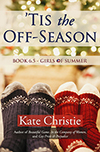


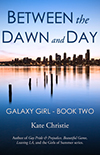



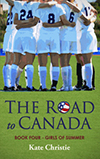
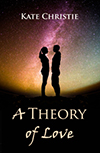
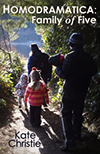

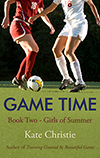
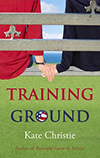
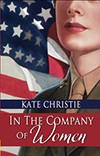

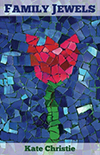



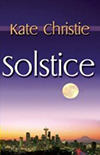
Wow… thank you for sharing this, even if it made me cry way too much.
Sorry…? 😉 Really, thanks for reading. It means a lot.
No apology necessary. It was very moving.
I am amazed by your mother, and by your writing about her. And thank you for that gorgeous song!
Thanks, Kali. The Wailin’ Jenny’s are one of my favorites.
I’ve been thinking about your mom off and on since you first told us about her decision to do VSED. I’m so happy she was able to accomplish the good death she desired. Love to all of you, especially your dad.
Thanks for the love and support. We appreciate it so much. Here’s hoping more people get a chance to experience a good death, too.
Kate, My brother in law, Charley, shared this post with me. It’s beautiful…and beautifully written. I love how it opens understanding of VSED and brings such a deep level of compassion and understanding to its power. I’m so touched by your transformation from the early stages of the process to now.
With your permission, I’d like to share it on the Spirit of Resh Foundation’s facebook page (https://www.facebook.com/SpiritofResh/) where we focus a lens on the possibility of translating loss into legacy. We do that through education and stories that express the heart and open a relationship with death that influences how one chooses to live. I await your response.
Thank you for your authenticity and beauty and love.
Hi Lily. Thanks for your kind words, and for reaching out. Charley mentioned you might. Your work sounds fascinating. Feel free to share my mom’s story if you think it might be of benefit to others. My dad, aunt, and I are hoping her story might inspire or at least comfort those who might be facing similar journeys. Thanks again, and best wishes.
Thank you Kate. I will post it then.
Meanwhile, I send warmth to you and your family along with a wish that the memories of your mom and the life and stories you shared with her be a balm…
My partner of 34 years has advanced Alzheimer’s and is in a memory care unit. The facility she is in is wonderful and she is getting excellent care but there is no way I will end my life like that if I am ever diagnosed with any kind of dementia. My partner, however, did not want to die and would tell me that even as her quality of life deteriorated. We all have to make our own decisions about end of life (if we have the choice) and we can only hope that our loved ones honor our choices. I can’t imagine how painful it was for you to watch your mother die but I think the pain of watching her die day by day for possibly years without knowing you or where she was has to be worse. I really admire you and your family’s devotion to your mother and your willingness to let her choose to end her life on her own terms. I know about the practice of stopping eating but didn’t know it had a name and information about it was available. Thank you so much for sharing this.
Hi Judy. Thanks for reaching out. I’m so sorry to hear about your partner’s dementia. I completely agree that everyone should be able to make their own decisions about end of life care. What a difficult position for you to be in with the love of your life. I’m sending good thoughts and energy your way. I agree–after watching my grandmother die of Alzheimer’s, I wouldn’t want to go out that way, either. That’s how Mom felt, too, and leaving before she had to go into memory care was the right decision for her.
I’m thinking of you and hoping you have others who love and support you on this difficult path.
Kate
Such a beautiful post. Your mother sounds like an amazing and inspiring woman. I’m from a Catholic family so all my relatives with dementia were eventually forced into assisted living homes. I’ve never heard of VSED. Thank you for sharing because its really enlightening. Its also strangely comforting to me since dementia runs in my family. When times are tough, I cling to my memories and always say, “Well, life can’t take away the joys I’ve already experienced.” So the thought of dementia in my later years saddens the hell out of me. Your mother’s planning sounds so thorough, yet necessary. The right to die debate always spikes my blood pressure. So thank you for this post. I hope it brought you comfort and peace to write it.
She was amazing and inspiring. And tough! Which can be difficult for a kid but less so as an adult child. Kris and I are both in your boat r.e. family history of dementia. That’s one of the reasons both of us feel so strongly about advocating for the right to die, even for those with dementia. Dying slowly is still dying, and we should all be able to determine at what point life is no longer worth living. I’m hoping to write a nonfiction book in the next year or two to help get the info about VSED into the mainstream.
And yes, it did bring me comfort and peace to write about my mother. Writing is such an amazing outlet for dealing with difficult emotions!
Wow. I had no idea about this process. I’m heart broken for you and your loss, but amazed at the spirit of your family, and the strength of your mom.
Thanks so much. It’s been a doubly hard year, losing Mom. But I, too, was amazed at her strength, and I’m happy for her that she got to write the final chapter of her life in a way that allowed her to maintain her dignity and quality of life. Not enough people get to do that, really. But more and more hospice and other end-of-life organizations are beginning to support VSED, which is a really positive development in end-of-life planning circles. I’m sorry to hear about your own family’s troubles. Hang in there!!